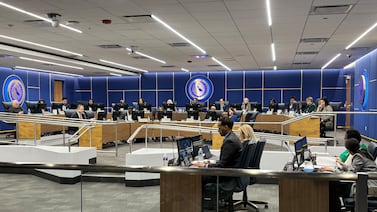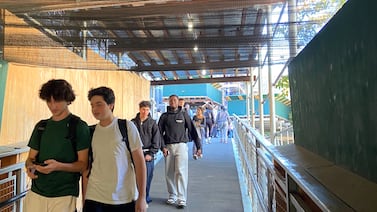Sign up for Chalkbeat Colorado’s free daily newsletter to get the latest reporting from us, plus curated news from other Colorado outlets, delivered to your inbox.
A Larimer County ballot measure that would send millions to child care efforts pulled ahead late Wednesday afternoon after almost 24 hours where it looked like it might be defeated.
If the measure stays ahead as the final votes are counted, it will be one of two local sales tax levies approved by Colorado voters this year to support child care providers and parents with young children. The other measure, which passed easily, would create the state’s first early childhood special district in Garfield and Pitkin counties and part of Eagle County — what backers call the Aspen-to-Parachute corridor.
The measures in Larimer County and the special district both asked voters for a .25% sales tax increase, the equivalent of 25 cents on every $100 spent. The levies would not apply to food, gas, diapers, or prescription drugs. The proceeds in both cases would help families pay for child care, boost pay for child care workers, and fund child care facility expansion or improvement.
Christina Taylor, CEO of the Early Childhood Council of Larimer County, said Wednesday night she was cautiously optimistic that the measure will pass.
“I think we’re in a really good spot,” she said. “All the people I’ve talked to, all the doors that I’ve knocked, it felt like this was where we were headed, and so I had faith all day.”
Taylor said that around 4:30 p.m. Wednesday she saw results come in that pushed the ballot measure over 50%.
Maggie Tiscornia, outreach director for the ballot measure in Pitkin, Garfield, and Eagle counties, said she watched the results come in with dozens of supporters at a Carbondale restaurant Tuesday night.
“I’m just incredibly proud and grateful for all of our community support,” she said.
The prospect of creating a “more affordable, more accessible and more welcoming community for families with young children” resonated with voters, she said.
The two ballot issues are the most ambitious among a record number of pitches across Colorado this year that would send new money to child care. In addition to the two sales tax measures, voters in seven rural counties — Chaffee, Custer, Eagle, Gilpin, Hinsdale, Lincoln, and Ouray counties — are deciding on lodging taxes that could generate new funding for child care facilities or related efforts.
Asking voters to raise local taxes to support child care efforts isn’t new, but Colorado lawmakers have made it more attractive in recent years by giving communities new ways to do it. In addition, as federal and state funding recedes, local leaders are looking to ease the budget pinch for pressing needs, including child care and housing.
The measure in Pitkin, Garfield, and Eagle counties is particularly notable because it represents the first use of a 2019 state law that allowed the creation of early childhood special districts. Similar to fire or library districts, the idea behind early childhood districts is that multiple communities or counties can band together and ask voters within their boundaries to levy taxes specifically for early childhood efforts.
The sales tax in the new district, which would be called Confluence Early Childhood Development Special Service District, would generate about $12 million a year.
Tiscornia said the sales tax increase in the new Confluence district will take effect on Jan. 1, and that the new money won’t start funding early childhood initiatives until the second half of 2026.
The sales tax measure in Larimer would generate nearly $29 million a year. Some of the money would be used for sliding-scale child care subsidies, with every family eligible for some help, said Taylor.
Another chunk of the money would be used for quarterly wage subsidies for child care employees, many of whom earn $16 to $19 an hour. A smaller amount would help providers upgrade or expand their facilities.
Ann Schimke is a senior reporter at Chalkbeat, covering early childhood issues and early literacy. Contact Ann at aschimke@chalkbeat.org.





